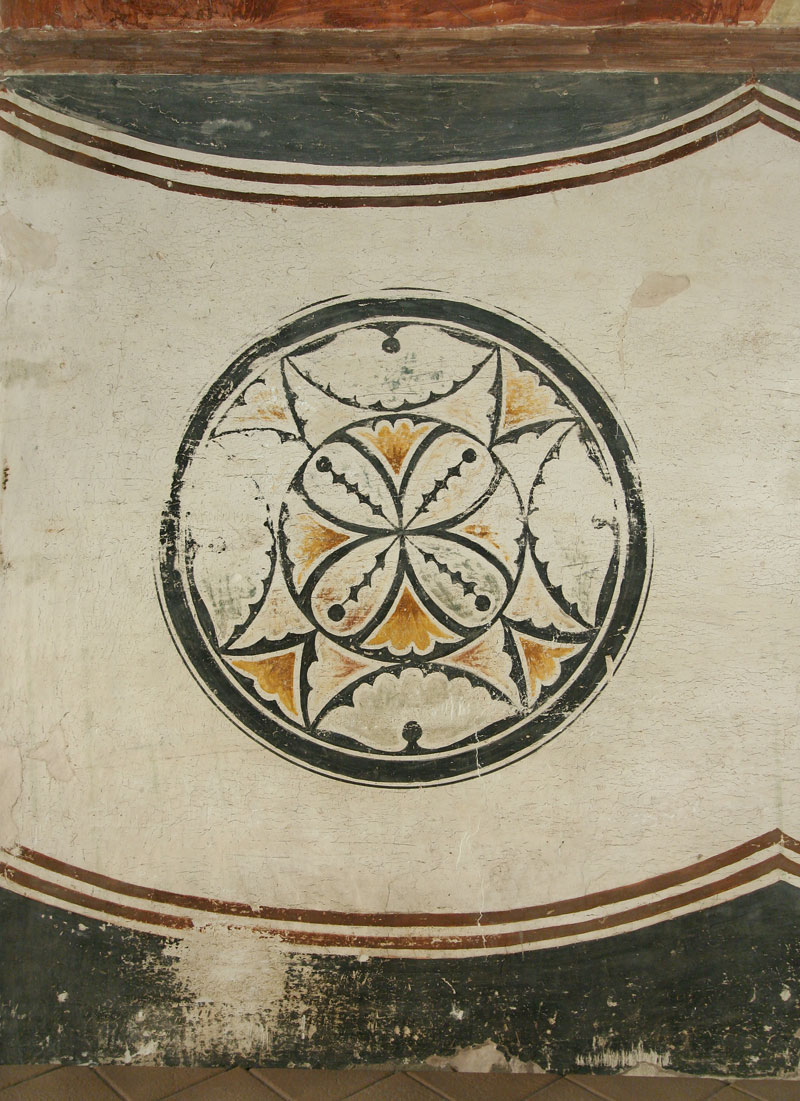
In the medallion (75 cm in diameter) there is a flower-leaf ornament against a black background. The geometrical pattern of the ornament is built of a circumference of half the medallion diameter and four circumferences with the foci on the smaller circumference and the medallion border dividing it into four equal parts and additional arcs between them. In the smaller circle there is a “flower” with four broad “petals” with a slash with wavy edges that end with “peas” through which the background shows through in the middle. The opposite “petals” are painted the same colour: the bottom left and top right “petals” are yellow (ochre), the other are green (glauconite). Between the “petals” are fan-shaped equilateral yellow “leaves” with wavy edges, facing the circumference, and brown shading at the base. Between the small circumference and the medallion border in the segments under the additional arcs there are four spreading fan-shaped “flowers” with wavy edges and embedded background “peas” at the base by the medallion border. All of them retain traces of green pigment. In between there are triple fan-shaped ochre “leaves” with brown shading at the base and wavy edges facing different directions: the middle one faces the medallion border, the side ones face each other. All the colour elements of the ornament including the wide border (3-3.3 cm) between the two thin ones have a white outline (white chalk ground). In the centre of the medallion, on the small circumference and the medallion border there are traces of the leg of a compass. Condition: thin strengthened cracks in the bottom half of the medallion, initial destruction of the white chalk ground all over the surface. Considerable loss of pigments in the ornament and cloth folds except for the ochre in the bottom half and the top fan-shaped “flower”. Complete loss of the cloth folds crossing the medallion. Conservation: 2000, restorer E.M.Christie.
|

